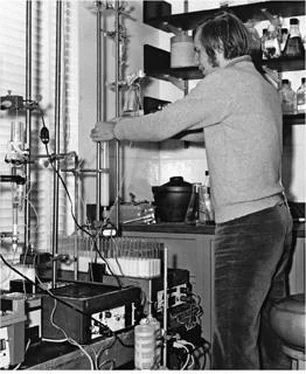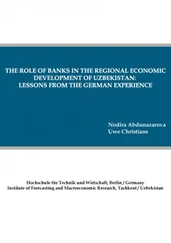James Watson - AVOID BORING PEOPLE - Lessons from a Life in Science
Здесь есть возможность читать онлайн «James Watson - AVOID BORING PEOPLE - Lessons from a Life in Science» весь текст электронной книги совершенно бесплатно (целиком полную версию без сокращений). В некоторых случаях можно слушать аудио, скачать через торрент в формате fb2 и присутствует краткое содержание. Жанр: Биографии и Мемуары. Описание произведения, (предисловие) а так же отзывы посетителей доступны на портале библиотеки ЛибКат.
- Название:AVOID BORING PEOPLE: Lessons from a Life in Science
- Автор:
- Жанр:
- Год:неизвестен
- ISBN:нет данных
- Рейтинг книги:5 / 5. Голосов: 1
-
Избранное:Добавить в избранное
- Отзывы:
-
Ваша оценка:
- 100
- 1
- 2
- 3
- 4
- 5
AVOID BORING PEOPLE: Lessons from a Life in Science: краткое содержание, описание и аннотация
Предлагаем к чтению аннотацию, описание, краткое содержание или предисловие (зависит от того, что написал сам автор книги «AVOID BORING PEOPLE: Lessons from a Life in Science»). Если вы не нашли необходимую информацию о книге — напишите в комментариях, мы постараемся отыскать её.
AVOID BORING PEOPLE: Lessons from a Life in Science — читать онлайн бесплатно полную книгу (весь текст) целиком
Ниже представлен текст книги, разбитый по страницам. Система сохранения места последней прочитанной страницы, позволяет с удобством читать онлайн бесплатно книгу «AVOID BORING PEOPLE: Lessons from a Life in Science», без необходимости каждый раз заново искать на чём Вы остановились. Поставьте закладку, и сможете в любой момент перейти на страницу, на которой закончили чтение.
Интервал:
Закладка:
Also keen to get the lactose repressor was the German biochemist Benno Müller-Hill, who was one year younger than Wally Coming from a politically liberal family, Benno gravitated further to the left as a chemistry student in the German socialist student scene, discovering that many teachers at the University of Munich had been Nazi sympathizers, though no one in authority seemed to care. In his hometown of Freiburg, Benno later did doctoral work in the laboratory of the sugar chemist Kurt Wallenfels. There he learned the essentials of protein chemistry through studying ß-galactosidase. He began to love science and became excited about Monod and Jacob's work on how lactose molecules induce the synthesis of ß-galactosidase. Later, in the fall of 1963, Benno began a postdoctoral position in Howard Ricken-berg's lab at Indiana University, to which he brought samples of the Wallenfels lab's glycosides to study their specificity in inducing ß-galactosidase.
In Bloomington, Benno never felt comfortable either as a German among its many Jewish biochemists or as a leftist among Americans whose paranoia about communists in their midst surprised him. But his experiments there, which gave him sufficient results for a talk at the August 1964 International Biochemistry Congress in New York, were an ample reward for such social unease. By then he wanted to move on to the lactose repressor and came up to me after my talk to see whether I would accept him into my Harvard lab. Explaining that it was Gilbert he needed to approach, I urged him to visit Harvard as soon as Wally returned from a lengthy visit to England. Upon their meeting, Wally instantly saw Benno as the collaborator he needed and offered him a research position starting as soon as he could politely leave Howard Rickenberg's lab.
In Bloomington, Benno had learned how to genetically manipulate E. coli. He ably deployed this newly acquired skill soon after he arrived at Harvard to show that the lactose repressor is indeed a protein, not an RNA molecule. By using chemical mutagens he generated almost two hundred E. coli mutants that made ß-galactosidase in the absence of any inducers. Two of the mutants represented change to “nonsense”
codons leading to premature polypeptide chain termination. If the repressor was made of RNA, this class of mutants would not have existed. The simple elegance of Benno's experiment was not revealed in his first manuscript draft. After telling him it was heavy and Teutonic, I rewrote it before its October 1965 submission to the Journal of Molecular Biology. As one of the journal's editors, I knew the article would quickly appear in print.Though both Benno and Wally had earlier independently failed to detect the lac repressor through its binding to potent ß-galactosidase inducers, this feature offered still the only approach at their disposal. To increase their chances of succeeding, Benno again turned to bacterial genetics, making a mutant repressor that had enhanced affinity for the chemical that induced isopropyl-ß-D-i-thiogalactosidase (IPTG). By growing E. coli cells in very low concentrations of IPTG, a much more effective repressor became available. To double repressor numbers in bacteria, Benno made a diploid derivative containing two copies of its respective gene. These genetic tricks by themselves, however, were not sufficient to pinpoint the lac repressor in cell-free bacteria extracts. Success came only through developing molecular separation procedures that yielded protein samples enriched in the lac repressor. The first positive results were achieved in May 1966, but they were barely credible. Only 4 percent more radioactively labeled IPTG was found in bacterial extracts containing repressore than in surrounding repressor-free solutions. Soon better fractionation methods led to a semipurified sample that drew the IPTG into a semipermeable dialysis sac at a concentration almost twice that found outside. These enriched extracts were not affected by the enzymes that break down DNA and RNA. In contrast, the protein-degrading enzyme pronase destroyed all binding activity, confirming Benno's genetic pinpointing of the repressor as a protein.
Until then, Wally and Benno faced the likely prospect of not being first to characterize a repressore molecular nature. On the fourth floor was twenty-six-year-old Mark Ptashne, who was feverishly trying to isolate the phage λ repressor. It blocks the functioning of all but one phage λ gene when phage is present as an inactive prophage on an E. coli chromosome. The only λ gene then functioning is that coding
for the repressor. Though its existence became known through elegant genetic experiments at the Institut Pasteur, no one in Paris had come up with a workable approach for its molecular characterization.Mark had arrived in the fall of 1960 to do his Ph.D. thesis work with Matt Meselson. As essential to his nature as his desire to do top science were his leather motorcycle jacket, his violin, and his golf clubs. In high school, Mark had spent summer vacations at the University of Minnesota working in the neurophysiology lab of a left-wing family friend. At Reed College, which he chose over Harvard for its exclusive devotion to undergraduate education, he moved from philosophy to biology, working during the summer before his senior year at the University of Oregon. There Frank Stahl told him to do his graduate work with Matt Meselson. Mark already knew that the λ repressor was the next big objective in the phage world. But this goal was too risky for an early 1960s Ph.D. thesis, and so Mark settled in for a semiroutine genetic analysis of phage λ. As his thesis experiments neared their end, Paul Doty and I strongly backed his appointment to a three-year stint in Harvard's Society of Fellows. This would give him a shot at the λ repressor. As a candidate, he proved a shoo-in, since Wassily Leontief, the new head of the Society of Fellows, saw in Mark an agreeable conversationalist for the society's Monday night dinners. His term as a junior fellow commenced in July 1965.
That August, I submitted a $55,000 grant application to the National Science Foundation to pay Mark's salary and lab expenses for the three years, including a $5,000 yearly salary for a technician. The funding would allow him to work independently from his boss, Matt Meselson, who by now had despaired of Mark's sometimes sloppy work habits. In fact, my application stated that Mark intended to use DNA-RNA hybridization techniques to detect the λ repressor, which was yielding messy results even before the grant came through. Not enough was known about how RNA polymerase transcribes genes in cell-free extracts.
Mark's game plan soon changed. He began to look for differences in the proteins synthesized when heavily irradiated bacteria are infected with different types of λ phage. He guessed that λ repressor synthesis constituted only 0.01 percent of the protein synthesis in cells carrying
λ prophages. To make scarce repressor molecules visible, he needed to drastically reduce synthesis of most bacterial proteins, as well as to inhibit the synthesis of all λ-specific proteins that were not the repressor. He reasoned he could cut back the routine synthesis of cellular proteins by irradiating the bacterial host cells with massive doses of ultraviolet light.
Mark Ptashne lobs a Softball at the 1968 Cold Spring Harbor symposium.

Интервал:
Закладка:
Похожие книги на «AVOID BORING PEOPLE: Lessons from a Life in Science»
Представляем Вашему вниманию похожие книги на «AVOID BORING PEOPLE: Lessons from a Life in Science» списком для выбора. Мы отобрали схожую по названию и смыслу литературу в надежде предоставить читателям больше вариантов отыскать новые, интересные, ещё непрочитанные произведения.
Обсуждение, отзывы о книге «AVOID BORING PEOPLE: Lessons from a Life in Science» и просто собственные мнения читателей. Оставьте ваши комментарии, напишите, что Вы думаете о произведении, его смысле или главных героях. Укажите что конкретно понравилось, а что нет, и почему Вы так считаете.












